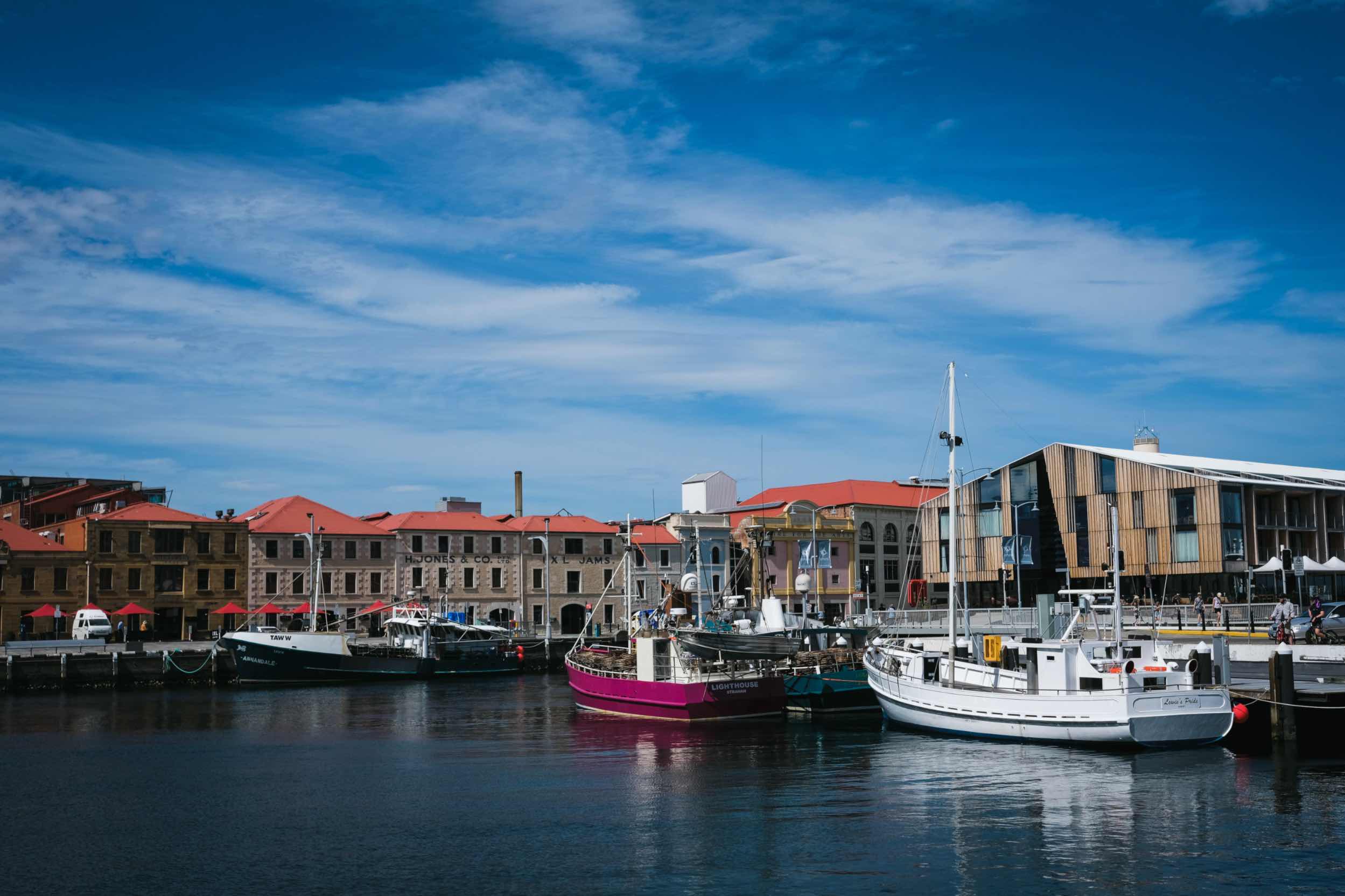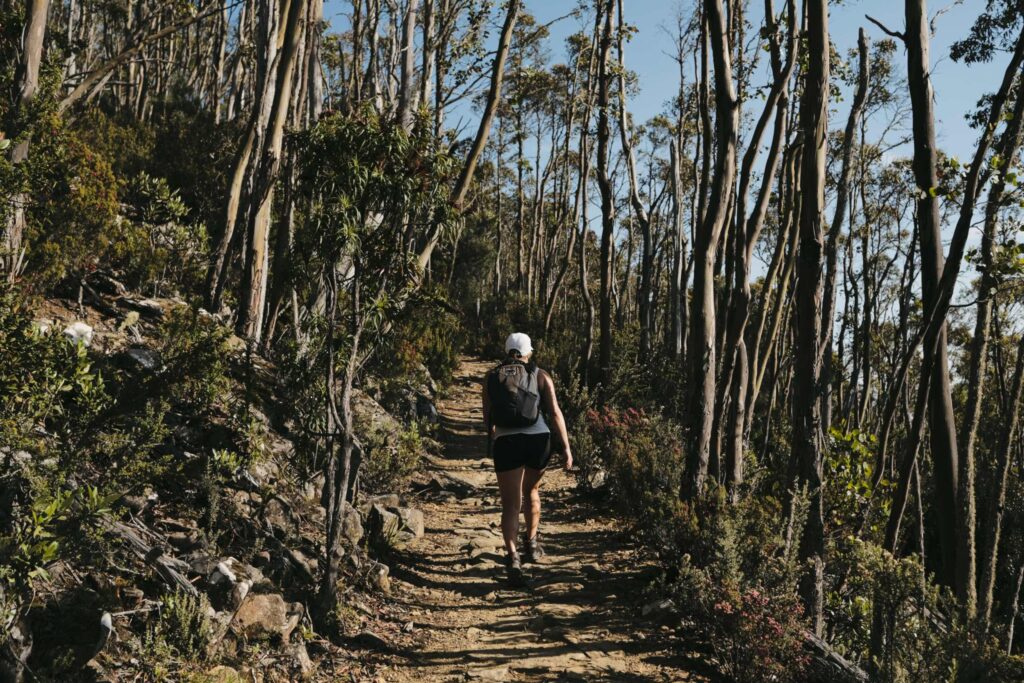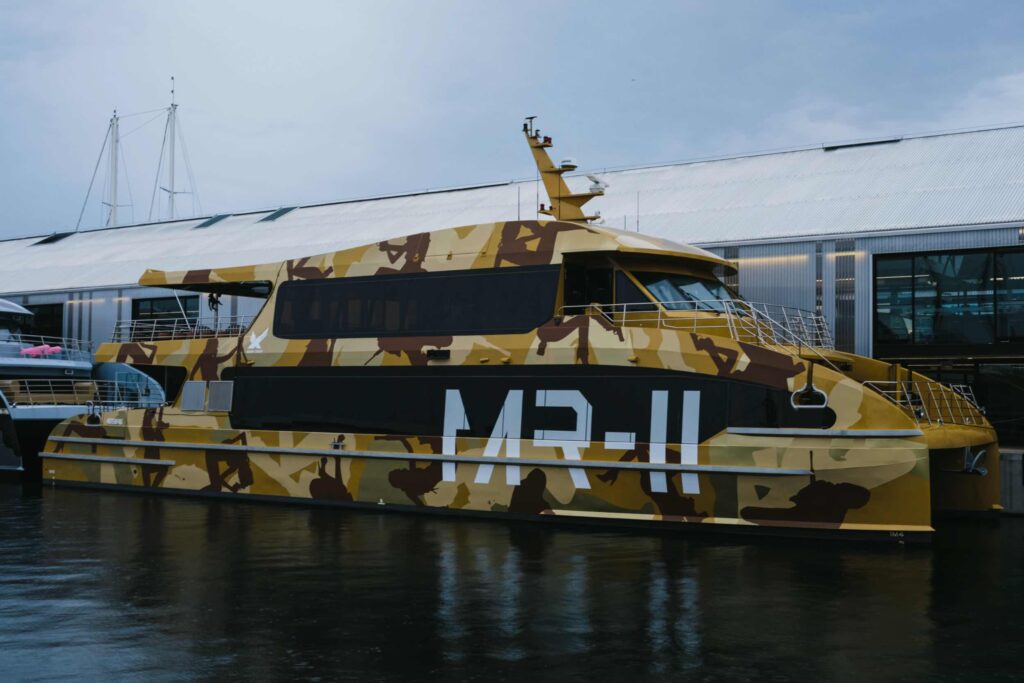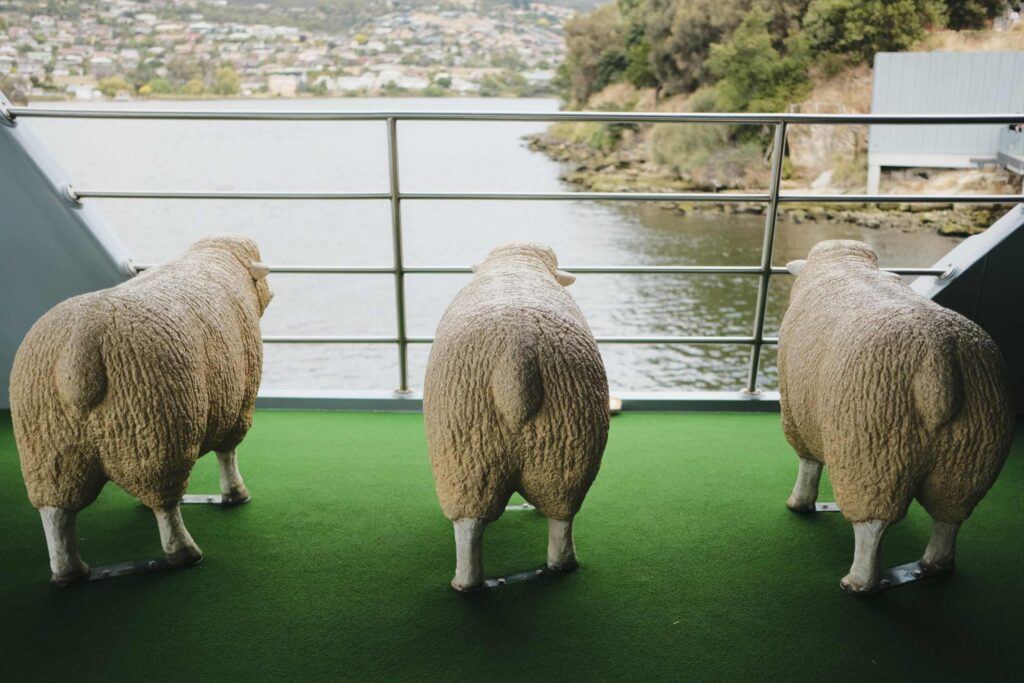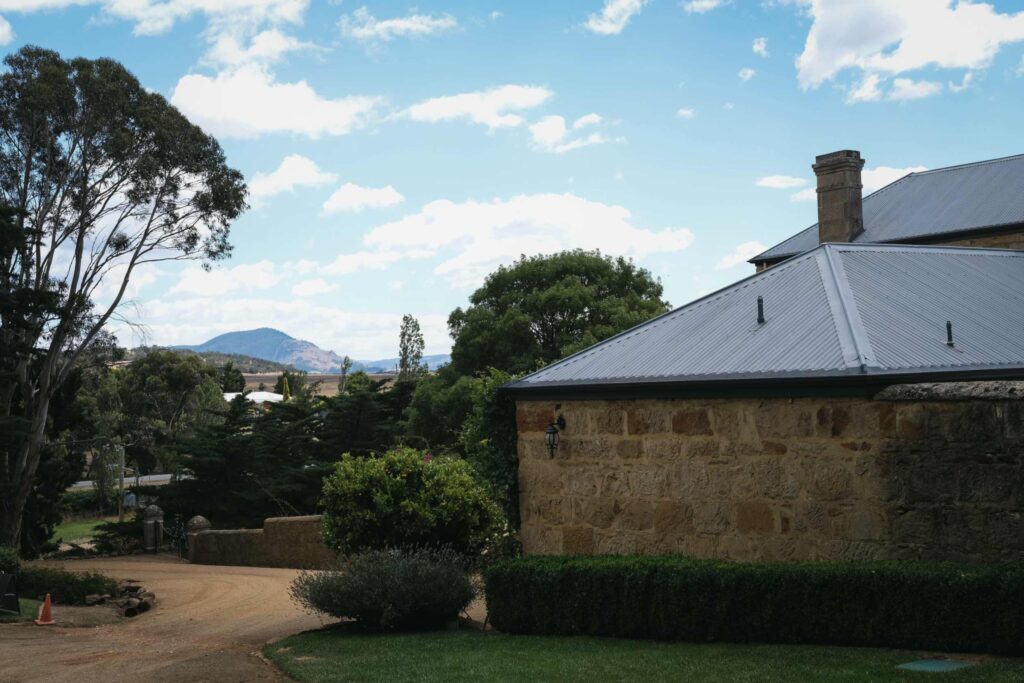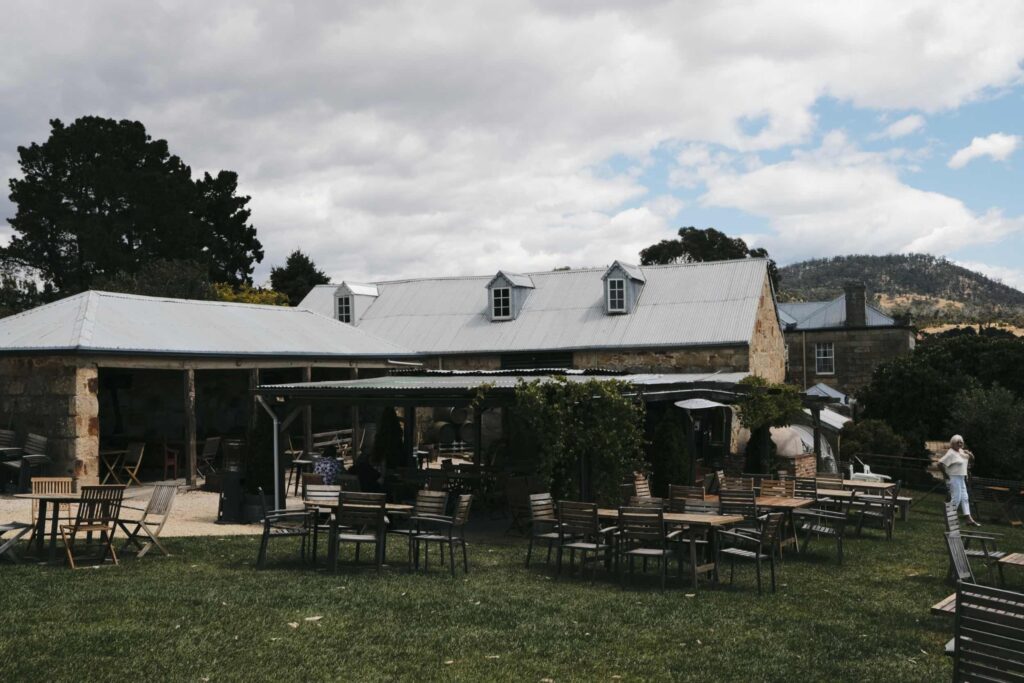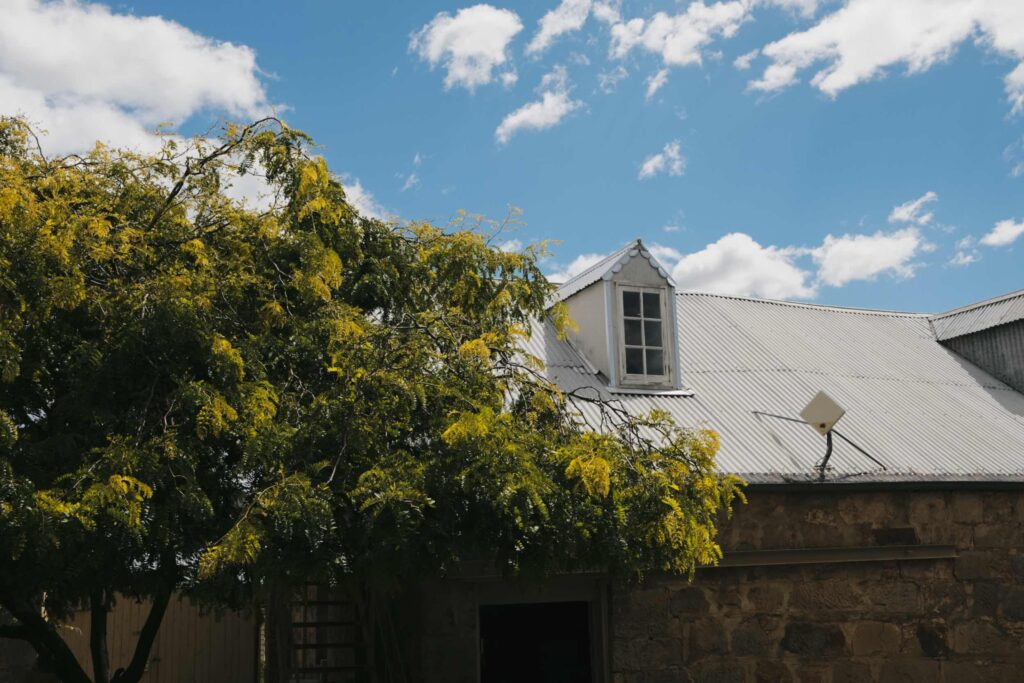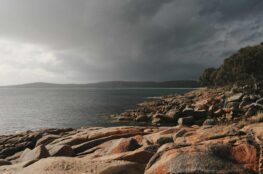Any fellow fans of harbor cities will adore Tasmania’s capital, Hobart. Situated along the estuary of the River Derwent with Victorian era heritage buildings next to colourful modern shipping containers in the foothills of the commanding Mouth Wellington, Hobart feels like a less populous Vancouver or Copenhagen. It is impossible to not crave seafood when this close to water and surrounded by fishing boats full of crayfish pots. We had a late lunch at Pearl and Co, the hip younger sister of seafood institution Mures. While Mures stick with more European styles of fish service, Pearl and Co specialize in small plates with a slight Japanese slant. Sitting in the sunny outdoor terrace, we indulged in Tasmanian Pacific oysters topped with juicy salmon roe and micro greens, tilapia and salmon sashimi with all the trimmings, and a wild fish ceviche with zingy coriander and lime salsa, peppers and coconut cream. The fish is so delicious, meaty and succulent, it could turn even the most squeamish stomachs into raw fish aficionados. Our dishes were washed down with glasses of crisp Delamere sparkling wine from the Pipers Brook region in Northern Tasmania.
Following a walk around the historic Battery Point neighborhood and the eclectic Salamanca Place, home to Hobart’s award winning weekly farmer’s market, we decided to visit the Lark Whiskey distillery’s waterfront cellar door. Though whiskey production commenced in Tasmania in the early 1800s, the industry did not take off until Lark’s founder, Bill Lark commenced production of his single malt in 1992. Over the last decade, Tasmanian whiskeys have received significant international recognition and awards beating some Scottish and Japanese producers. We compared the tastes of the Cask Strength, with butterscotch and maple syrup notes balancing punchy peat, the Symphony Number 1 blend which aims to combine the best flavor notes from bourbon, port and sherry and the gooey amber Sherry Cask on a tasting paddle. All were incredibly well balanced in flavor with sophisticated complexity though perhaps a bit too smooth for fans of ultra boggy peat.
With the low sun gleaming across the water, an aperitif was calling at the stunning Henry Jones Art Hotel. Housed in an old jam factory, the Henry Jones celebrates its industrial past while paving the way to the future with tasteful modern architectural features against the 19th century sandstone walls decorated with over 400 pieces of contemporary Tasmanian artwork. Daily 60 minute art and history tours are open to hotel guests and the public. The hotel houses The Long Bar, contemporary restaurant Peacock and Jones, asado grill fine diner Landscape Bar and Grill, and a café all sharing the hotel’s ethos. Despite the well curated cocktail list including barrel aged classics and a tequila mezcal and coffee number, Tequila Mockingbird, I opted for the Pagan cherry cider from the nearby Huon valley – a perfect mix of gose like sour, Campari bitterness with a touch of maraschino sweetness.
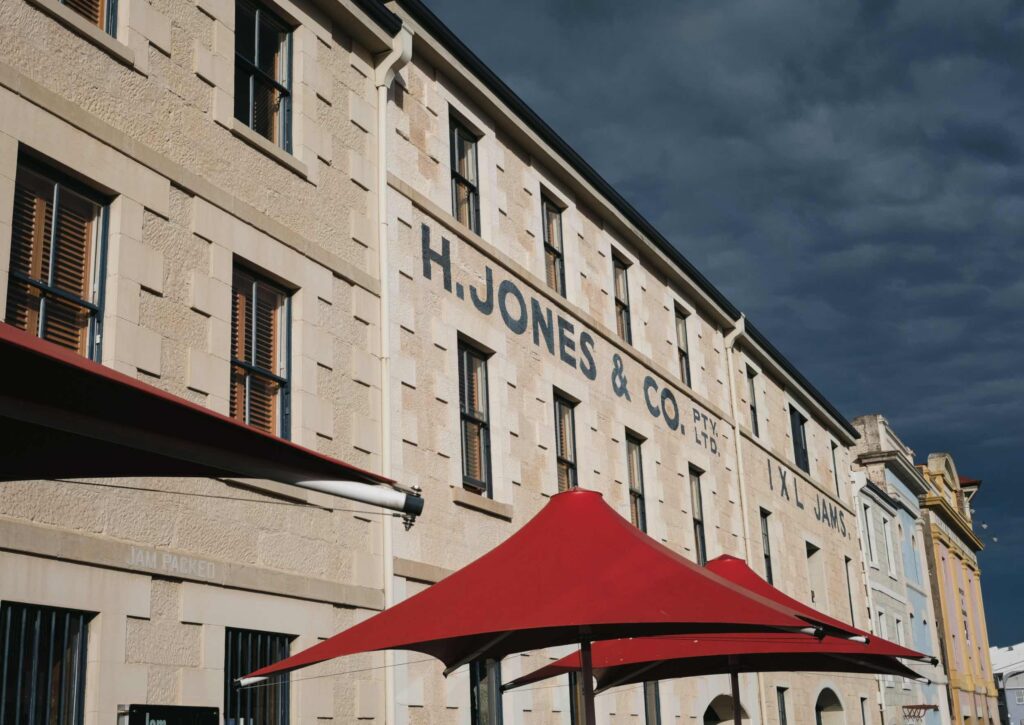
Dinner was at Templo, a quaint 16 seater tucked on a quiet neighbourhood side street. The daily changing degustation menu centred around local produce with an Italian theme. The first course was Tasmanian charcuterie sliced paper thin alongside tangy turmeric house pickles and crispy gnocchi fritto, fried shells with a pillowy centre which elevated the simple starter. Next was the world’s best dip, vitello tonnato – an umami bomb of anchovy, garlic, oil and tuna served with slices of porchetta and crispy capers. Other menu hits included juicy eggplant ravioli, pickled mussels on toast, kingfish crudo, Dory with a sharp hazelnut beurre blanc and a roasted fig pavlova. For 65 dollars a person (or shared in our case), you can indulge in the creative beverage pairing which goes beyond the typical wine fayre and can include sake, vermouth and ciders carefully chosen for each course.
With the sun shining, we braved a climb up Hobart’s watchdog, Mount Wellington. Starting part way up the mountain, we followed the Pinnacle Track via the Zigzag trail to the top. The short but steep trail walk was about 3 km each way and offered stunning views across the Huon. Ample drinking water, sunscreen and good hiking shoes are a must especially for the descent.
Mid morning we boarded the Mona Roma ferry, a high- speed camouflage boat to Hobart’s prized tourist attraction, The Museum of Old and New Art (MONA) owned by eccentric Tasmanian gambler, David Walsh. The ferry’s quirks – seats shaped like sheep, graffiti and rock music paint a picture of what to expect on arrival at Mona. The scenic route down the Derwent river is well worth the 23 dollar ticket price.
Even if you are not a huge art fan, you can easily spend a whole day at Mona admiring the building’s architecture reminiscent of a Bond villain’s lair, designed by Roy Grounds, the opulent velvet furnishings which are a far cry from the clinical feel of many galleries, or have a drink at the resident winery, Morilla, or brewery, Moo’s Brews. There are no less than two fine dining restaurants with epic views and an excellent burger stand Dubsy’s featuring vegan Beyond Beef burgers, sustainable wallaby burgers with beetroot and rocket pesto, and flame grilled gochuchang Korean chicken burgers served on the lawns. Be sure to fill your stomachs prior to witnessing the Poo Machine, a piece by a Belgian concept artist replicating the gastroenterological journey of food which has been featured in Bowel Cancer screening campaigns.
Morilla, “rock by the water” in various Aboriginal dialects, has origins equally as rebellious as its home, MONA. Founder and Italian textile merchant, Claudio Alcorso planted Rhine riesling cuttings from David Wynn’s South Australia vineyard in 1958 against government advice that the land was intended solely for apple and pear cultivation. The wines did not take off until David Walsh purchased the property and enlisted Canadian winemaker, Conor Van der Reest to revamp the offerings and redesign a new state of the art cellar door and moody barrel room.
Morilla carries three lines of wines – Praxis, for bold everyday drinking, Muse, a modern take on old world classics and Cloth, a premium series which plays homage to Claudio Alcorso’s beginnings in textiles. Labels in the Cloth series are made from naturally dyed hand applied cloth. We were drawn to the Muse line enjoying the elegant vegetal Sauvignon Blanc and slightly oaked chardonnay with herbal lemongrass notes.
Anyone leaving Hobart by car must start their journey via one of the excellent wine regions on the city’s peripheries – Derwent Valley (20-30 minutes) home to Stefano Lubiana, the Huon (45 minutes) home to Kate Hill, Willy Smith and Pagan cideries, or Coal River Valley (30 minutes) home to Pooley, Norton and Frogmore Creek.
We visited Pooley, a 5 star Halliday winery on our way to Freycinet National Park. Pooley make their wines on two sites creating different tasting notes despite the relative proximity. The original Cooinda Vale vineyard is located on Northern slopes which shelter the grapes from winds with sandy loams above impervious clay soil while the Butchers Hill vineyard closer to Richmond has lower diurnal temperature variation due to exposure to strong winds and contains Dolerite volcanic rock over sandstone soil. Both sites are exposed to little water and have excellent drainage creating a low yield of high quality fruit. After tasting varietals from both sites side by side, we overall preferred the Butchers Hill wines, especially their pinot noir with earthy shitake mushroom notes balanced against black cherry and bay leaf characters. However, the Cooinda Margaret Pooley Riesling won our hearts with delicate green apple and aniseed notes a bit more subtle than the more aromatic Butchers Hill Riesling.
Outdoor exercise and activities were the perfect tonic to two days of glorious eating and drinking.
